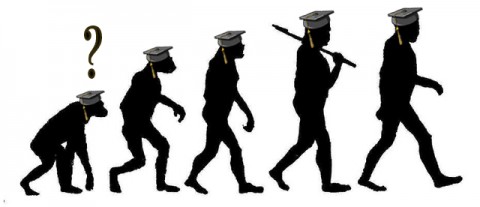In recent years, many countries in Europe and the former Soviet Union have seen an explosion in university enrollment. During approximately 10 years (from 1999 until 2010) higher education enrollment increased by 64% in Central and Eastern Europe, 27% in Central Asia and South Caucasus, and 19% in Western Europe and North America (see UNESCO).
|
||||||||||||||||||||||||||||||||||||||||||||||||||||||||||||||||||||||||||||||||||||||||||||||||||||||||||||||||||||||||||||||||||||||||||||||||||||||||||||||||||||||||||||||||||||||||||||||||||||||||
Several tendencies are evident in the data:
Over 10 years, enrollment has increased the most in those Eastern European countries that had relatively low enrollment rates (20-25%) at the outset of the period. For instance, the Czech Republic, Slovakia and Romania have more than doubled enrollments, catching up with the established EU member states. Another country that has more than doubled student enrollment is Armenia.- Enrollments have grown at a relatively modest pace (or not at all) in Central Asian countries that had very low enrollment rates at the outset of the period, such as Uzbekistan, Azerbaijan and Tajikistan, and in Georgia after 2005.
- Enrollments grew much faster in the first half of the period (1999-2005) throughout the transition region. By 2005, many countries appear to have exhausted their higher education potential because of a combination of reasons including the availability of cheap (or free) study abroad opportunities, especially for new EU member states, stronger labor markets (affecting the opportunity cost of further education), and education system reforms that placed greater emphasis on the quality of students (through national exams, and of universities (by having licenses revoked).
Now, there is no arguing that increasing higher educational enrollments may be a very positive development for most transition countries aiming for the “knowledge era”. However, the sheer pace and extent of higher education expansion in many transition nations is suggestive of an uncontrolled explosion bringing about great efficiency losses and costs for the societies involved. Here are two reasons:
- How can a country (almost) instantly increase enrollment in a field of education in which it had no prior expertise? Only by lowering the standards.
- How can a country instantly double student enrollment? Only by allowing very weak students to buy diplomas of “higher education” from pseudo universities. In many (documented) cases, diplomas exchanged hands for a modest price equal to the marginal cost of printing and “normal” profit for “university” owners. No requirement to attend lectures or pass exams. No questions asked.
Interestingly enough, an uncontrolled expansion of undergraduate education creates demand for further (Master’s level) studies, often of very low quality, in order for the better students to differentiate themselves from other diploma holders (and to “signal” higher quality in the labor market).
As a result, many transition nations now find themselves in an over-education “trap”. How does it work?
Not having a college degree in a society that does not provide reputable vocational training (as in Germany) and where more than 60 or 70% of the population do have college degrees carries a stigma. To avoid it, everyone is trapped into getting a college degree, regardless of its quality and relevance for future occupation. The more people get trapped, the more “costly” it is to opt out.
The over-education trap is not unique to transition nations. Economists are pointing out to the massive accumulation of debt by US college students as potentially the next asset bubble. US college enrollment has surpassed 70% in 2010. Prices for college degrees continue to rise, and so does demand. No parents want their children to be left behind.
The social and individual inefficiency associated with the over-education trap is hard to quantify, but here is a short list of what it might comprise, at the minimum:
- Earnings of young adults who could have used 3-4 years of their life for work or vocational training that would help them avoid unemployment and increase productivity.
- Earnings of excess university teaching personnel who have the potential to produce social value added in other sectors of the economy (including secondary education).
- The cost of creating and maintaining excess physical infrastructure in higher education.
The over-education trap is by definition producing a “skills mismatch” in the labor markets of affected countries, i.e. a situation when an economy has a surplus of workers with tertiary and secondary general education, and a shortage of workers with technical qualifications. Common symptoms of this decease are high unemployment and employment in low skilled jobs among college graduates, and low monetary returns to tertiary education.
These symptoms are present in most countries of the transition region, including Georgia. Thousands of students still go every year into general economics, management, and legal studies that bring them not an inch closer to productive employment. Still, Georgia is a huge exception. In fact, it is unique among all transition countries in that, beginning in 2004-5, it had the political will to combat corruption in higher education and to set a high quality bar for both students and universities. As a direct consequence of its education policies, Georgia is the only country in the “high initial enrollment” group (above 30% in 1999) that managed to bring higher education enrollment from the peak of almost 47% in 2004 down to below the 1999 level of 35%.
Of course, weeding out weak universities solves only a part of the problem. Georgia has yet to offer its young generation a viable option of high quality vocation training and productive jobs.
QUESTIONS FOR RECENT UNIVERSITY GRADUATES:
- How many of you have completed a full course of study at a university without acquiring any practical skills or getting an “education”?
- How many of you felt that your studies in an MA, MBA or MSc program did not equip you with any knowledge beyond what you have already acquired in your baccalaureate studies?
- How many of you have had the experience of having your job application rejected because you were, supposedly, “overqualified”? Or of taking jobs below your level of qualification?
